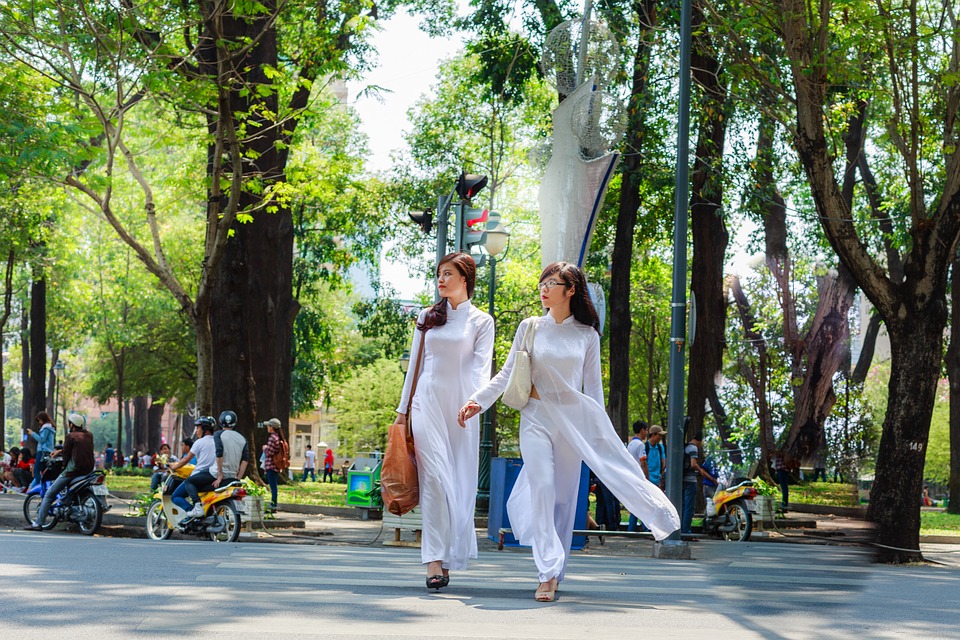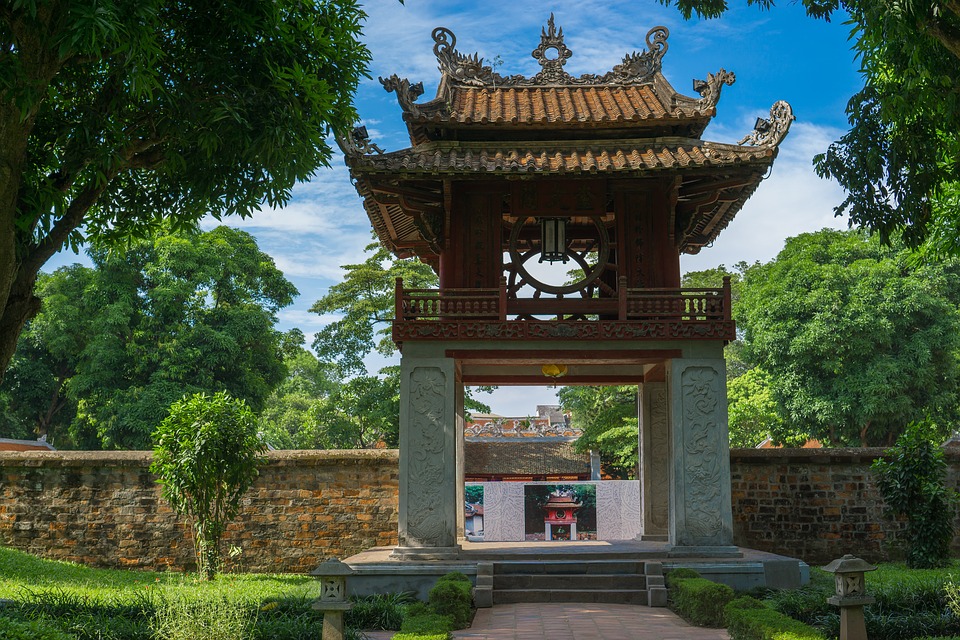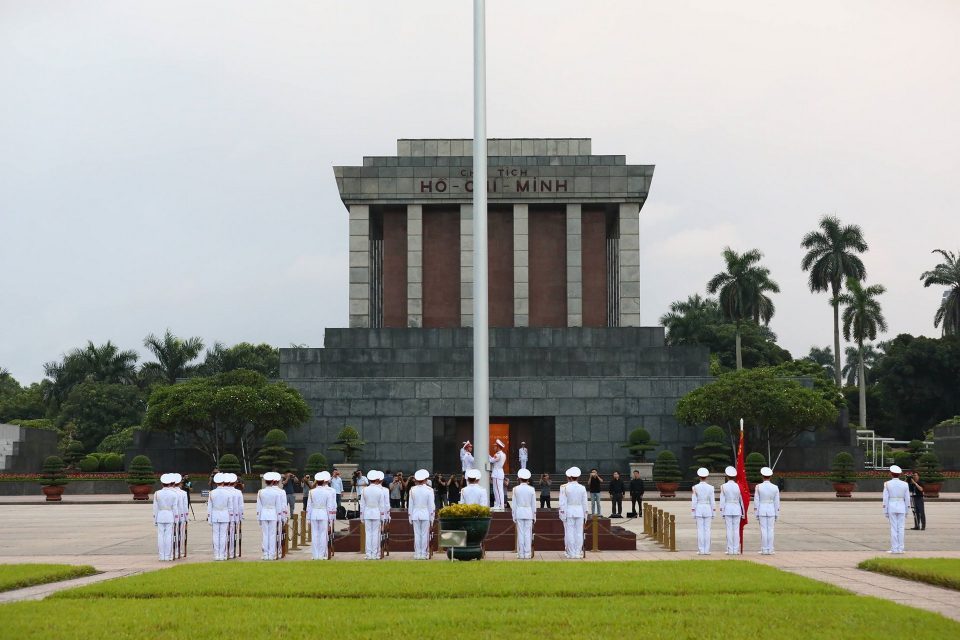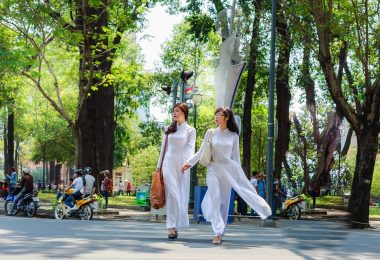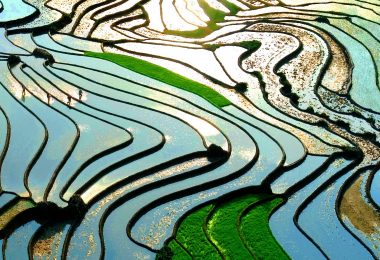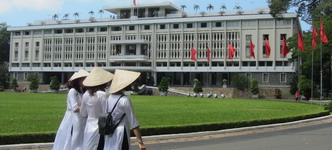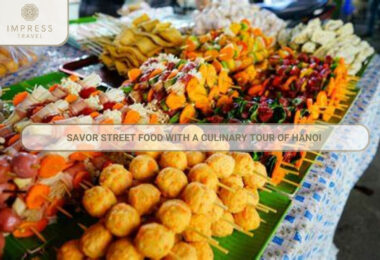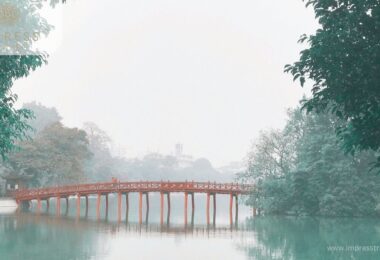For a long time, the art of calligraphy has been a cultural feature that has been preserved and promoted through Tet holiday activities. Tourists can see this culture when coming to Hanoi, but not everyone understands it. The article below Impress travel will introduce this artistic tradition.
History and origins of calligraphy
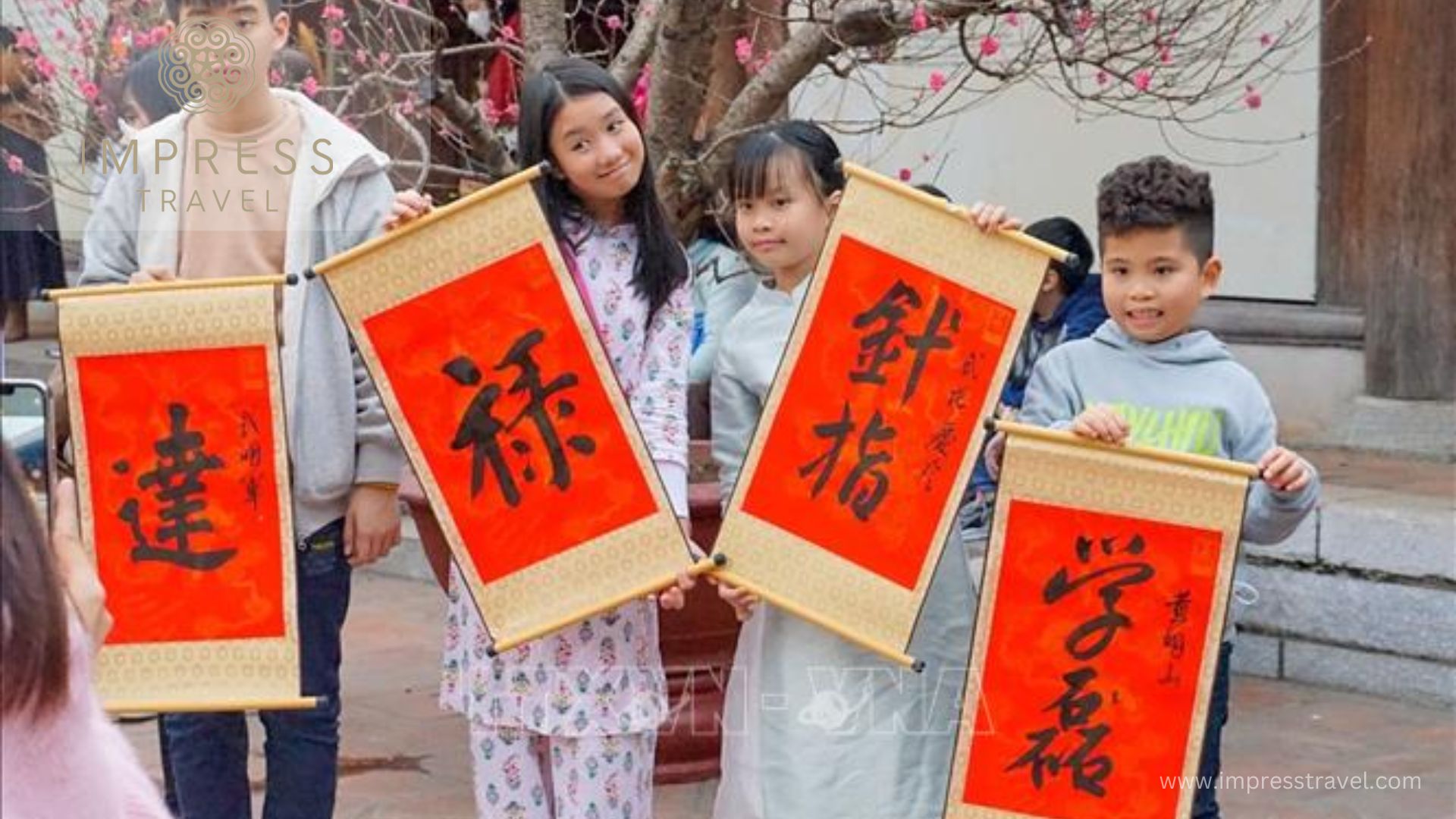
The art of calligraphy
The art of calligraphy is a form of performing the art of writing, using pens to design letters to express moods and demonstrate the highest artistic level of the intellectual class. In particular, a work of art must contain many artistic elements, from the way of writing, the form of presentation, and the meaning of the work.
In Asia, with the advent of Chinese characters, the art of calligraphy soon developed in this Chinese civilization. Compared to European countries that use a Latin script consisting of individual letters put together to form meaningful words, Chinese characters are a set of characters with many complex strokes, initially using strokes to describe objects, then later on. is to use sets combined together to form meaningful words.
In Chinese culture or the countries of the Four Co-cultures (referring to four countries with similar cultures including China, Japan, Korea and Vietnam), the art of calligraphy is classified as painting, i.e. is the art of drawing and moving lines. Painting includes two types: painting (painting) and calligraphy (lettering).
Calligraphy originally came from China and was introduced to Vietnam in the early years AD during the Han Dynasty. The first work of Vietnamese calligraphy found is the words “Dai Tuy Cuu Chan, Bao An District Taoist Chi Bi Van" emblazoned in the style of “seal" on the forehead of a stele in Truong Xuan village (Thanh Hoa). This work of Calligraphy is currently on display at the historical museum.
History of the formation of the art of Chinese calligraphy in Vietnam is similar to calligraphy in China, but the aesthetic expression has quite different points such as: The brush strokes are soft but not weak, deep but not weak. no sediment, launch without madness. To write calligraphy in Chinese characters, the writer needs to understand the meaning of the characters, have a deep foundation of knowledge about combining and distributing shapes, and creating letter shapes through each line.
Art of calligraphy in Hanoi culture
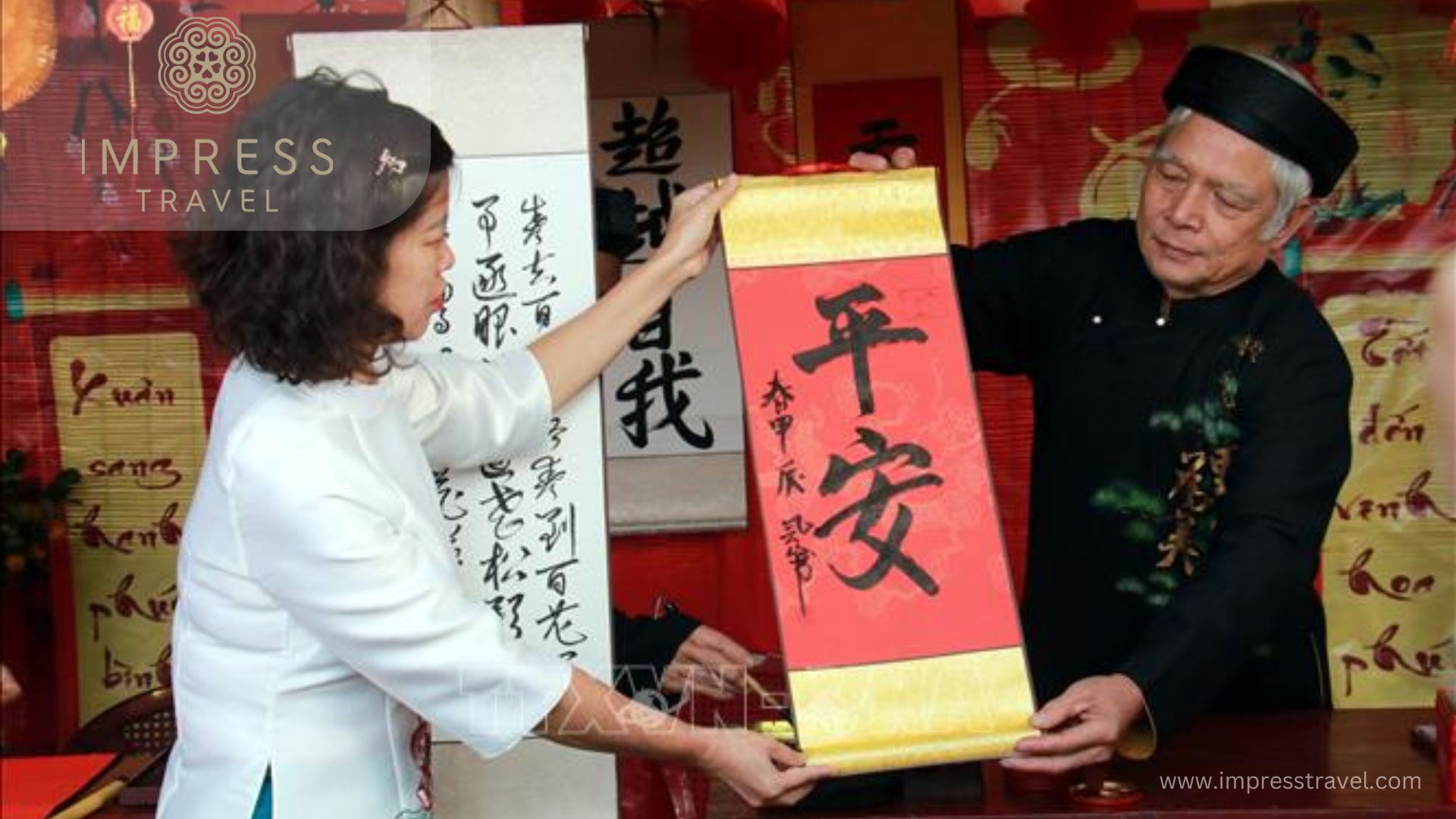
Please calligraphy
Every year when spring suddenly comes, Vietnam in general and Hanoi in particular have a traditional system of writing Tet calligraphy, also known as Tet calligraphy gifts. The purpose of writing Tet calligraphy is to wish family, relatives and friends a happy and peaceful year.
When talking about Tet, people cannot help but mention the images of banh chung, firecrackers and bamboo trees. In addition, Vietnamese Tet will not fail to mention the Tet red couplets, a tradition of the couplets nation. Formed from the procedure of asking for letters very far away, Tet is a day for close family and friends to gather and display, an opportunity for hedgehogs, on Tet, teachers often give calligraphy such as Phuc, fortune, wealth, Tho, and peace.
Tet calligraphy is writing with flexible pen strokes, expressing the writer’s thoughts, style and wishes. Tet calligraphy is not only a form of art, but also a custom with cultural significance, respecting words and knowledge, wishing for a peaceful, prosperous and happy new year.
Tet calligraphy is often written on special types of paper such as coconut paper, do paper, touch paper… or printed on paintings, calendars, cards… to hang in the house or send to relatives and friends on the occasion. New Year. Tet calligraphy letters are often chosen according to the meaning appropriate to each object and situation.
In addition to the culture of writing calligraphy on Tet for good luck, the Hanoi Department of Culture also regularly organizes exhibitions of activities related to the art of calligraphy. For example, on the occasion of celebrating Vietnam Cultural Heritage Day (November 23, 2023), on the evening of November 14, the Center for Cultural and Scientific Activities of Van Mieu – Quoc Tu Giam organized a Thang Long calligraphy exhibition. Long – Hanoi with the theme ‘Thanh Dan Thanh’.
The things you want to convey will be rewritten, spread out, and expressed through every stroke of writing and drawing by today’s calligraphy and painting authors. The exhibition is a collection of works by many authors selected to suit the exhibition’s theme, meeting both content and form, ensuring the artistic spirit that the exhibition aims for. The authors are rich in presentation, diverse in style and skillful in expressing words on paper.
The Temple of Literature – Quoc Tu Giam is a place imbued with the spirit of Vietnamese learning, with a tradition of studiousness, respect for teachers, and appreciation of talent. The content of the works participating in the exhibition here partly reflects that fine tradition. The works are arranged according to ideas based on the application of light technology. Through this, we hope to bring to the public a new and modern view of our ancestors’ art of calligraphy.
As the country’s first university relic complex and also a famous tourist destination in Vietnam, on weekends Van Mieu – Quoc Tu Giam welcomes many international tourists to visit and experience. The rich history, culture and oriental architecture of the Temple of Literature makes many tourists consider this one of the destinations not to be missed when coming to Hanoi.
Art of calligraphy in modern
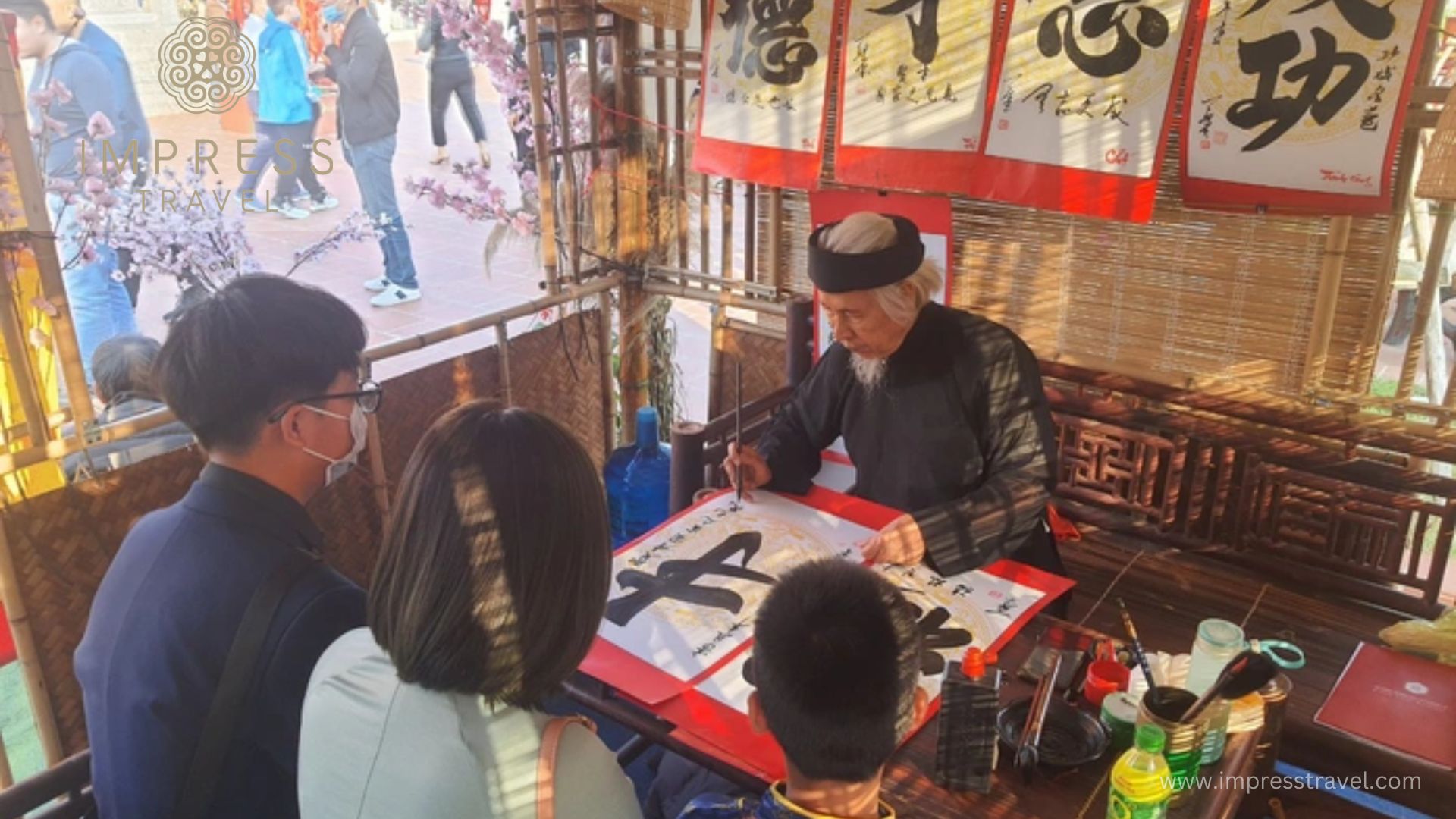
Art of calligraphy in modern
In the flow of contemporary life, the art of calligraphy has become a unique cultural asset, where traditional quintessence meets innovation, where individuals can freely express and create works of art. Products with unique personalities. This is also the form of culture that Vietnamese tourism wants to convey to international tourists.
Over time, the National Language was born with Latin letters, many Vietnamese people wanted to write beautifully, and Vietnamese-Latin calligraphy also began to emerge from there. The appearance of modern Vietnamese calligraphy is a new creative breakthrough in national art, both innovative with the use of Latin letters and boldly traditional with ancient art styles.
Unlike the art of Chinese calligraphy, Vietnamese calligraphy is not within the framework but is more free and unconventional. The expressiveness in the art of Vietnamese calligraphy is clearly expressed, the aesthetic of the writer as well as the taste of the viewer often tends towards simplicity, harmony, poetry, and romance.
The content in Vietnamese calligraphy is often folk songs, proverbs, teachings of famous people, and poems rich in lyricism. Each work of Vietnamese Calligraphy depends on the feelings and inner thoughts of the writer, sometimes it is calligraphy with gentle and elegant nuances, or sometimes it is calligraphy with a misty illusion, making the viewer art of calligraphy seems to be lost in a mysterious and quiet world of art.
With contemporary nature, the art of calligraphy is now also updated. That is, applying the beauty of color, shape, design, and fine art, making the letters more variable, more vivid, and more diverse in color.
Today, the art of calligraphy is constantly diversifying and developing. From decorative calligraphy to contemporary design, calligraphers are constantly looking for new ways to express their talents and emotions through beautiful writing.
Value of preserving the art of calligraphy
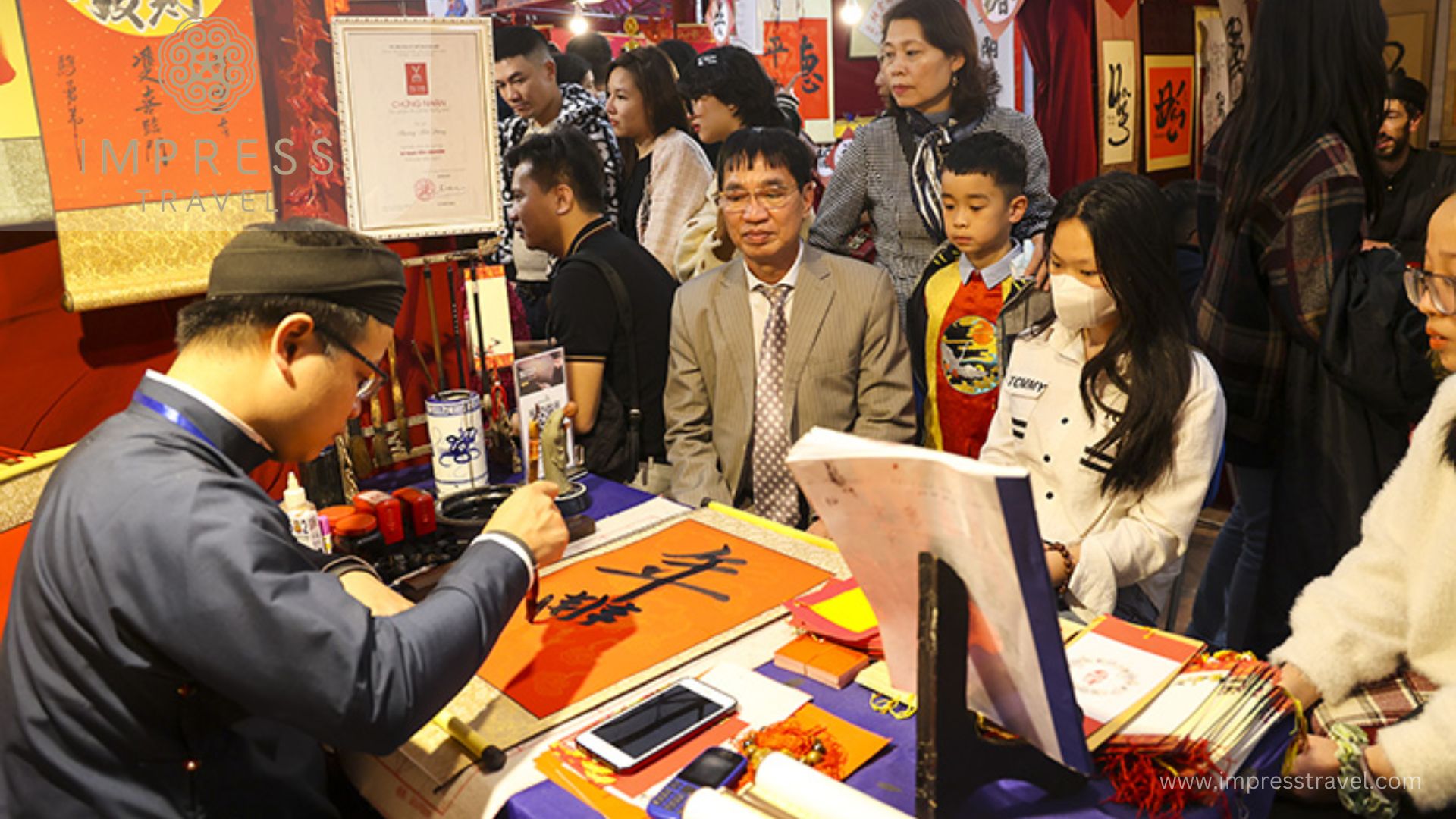
The beauty of Hanoi’s calligraphy
No matter how many wars it has gone through, the art of calligraphy still bears an inseparable Asian imprint in the overall body of literature and art. At each stage, the calligraphy has changed more or less, in accordance with the purpose and contemporary historical context.
A work of calligraphy also has moderate darkness and clear contrast between light and dark, helping the art of calligraphy achieve high aesthetics, following rules but also being liberal and elegant. When a letter is written, the lines of the letter and the relationship of the strokes must be closely linked together.
Nom script is a creative product of Vietnamese intelligence. Formed and existed over thousands of years, Nom script not only plays the role of a very lively and important communication tool for Vietnamese people, it is a means of conveying many cultural values and expressions, reflecting many cultural values and expressions. reflects the outlook on life and the worldview of our ancestors for many centuries.
In particular, calligraphy paintings become decorative works in spaces, bringing very simple beauty, there are minimalist works, there are colorful works, helping to connect the space with wood, made of iron and cement with softer lines, balancing the beauty. And calligraphy works are like air purifiers to remind of the spirit and beauty of the people living in that house. That is the value that calligraphy creates.
Conclusion
Handwriting becomes a beauty when the writer relaxes and gives his or her heart to the handwriting to reveal his own spirit and personality. Then handwriting becomes art. That is the art of calligraphy, a beautiful traditional cultural feature of the Vietnamese people, and to this day, in modern society, people still preserve and promote that fine tradition.
With the above information, we hope visitors will understand more about the beauty of calligraphy in Hanoi and the opportunities to experience it, especially during Lunar New Year. Don’t forget to follow Impress travel’s Facebook and Website to update and book the best Hanoi tours!




































